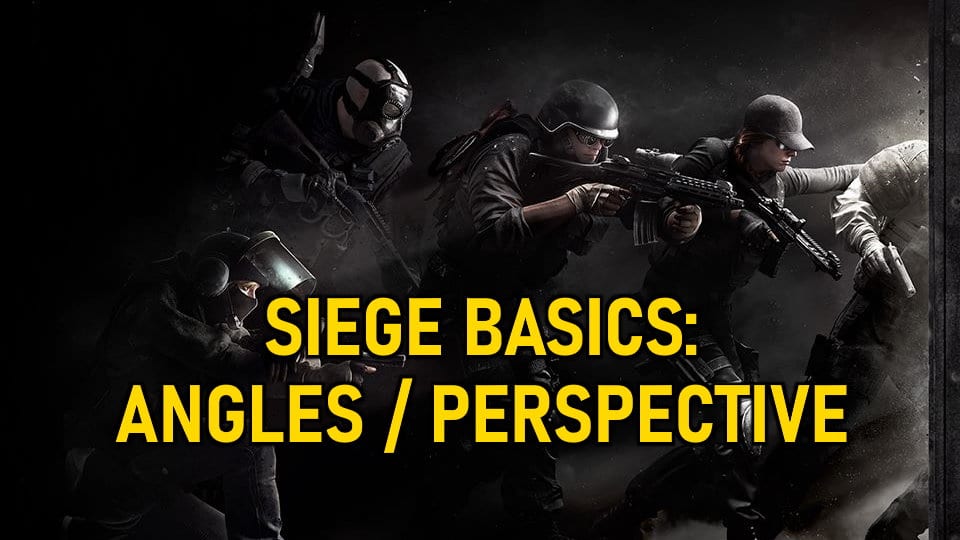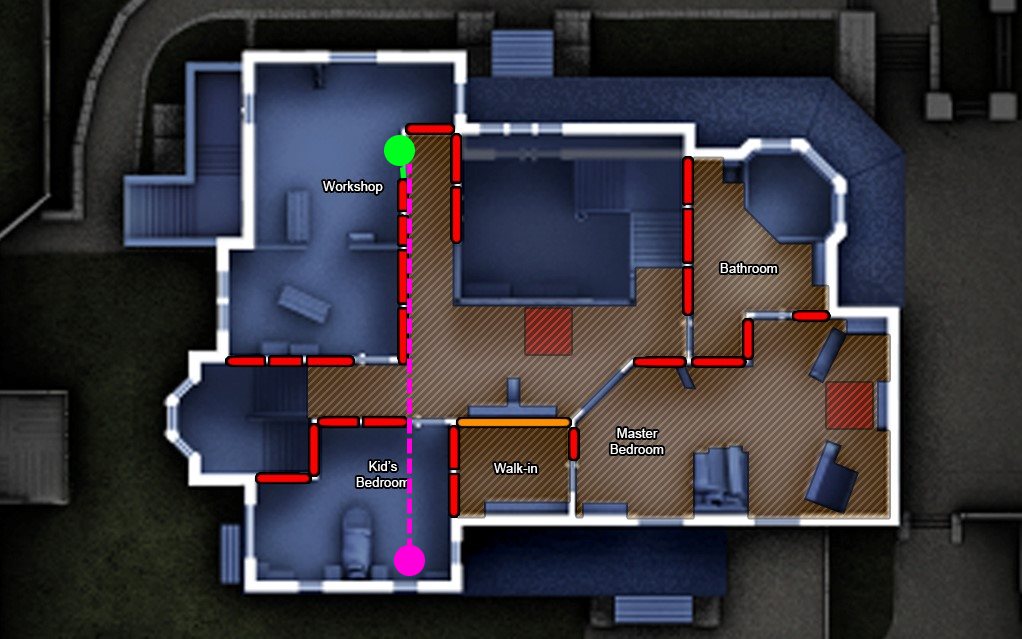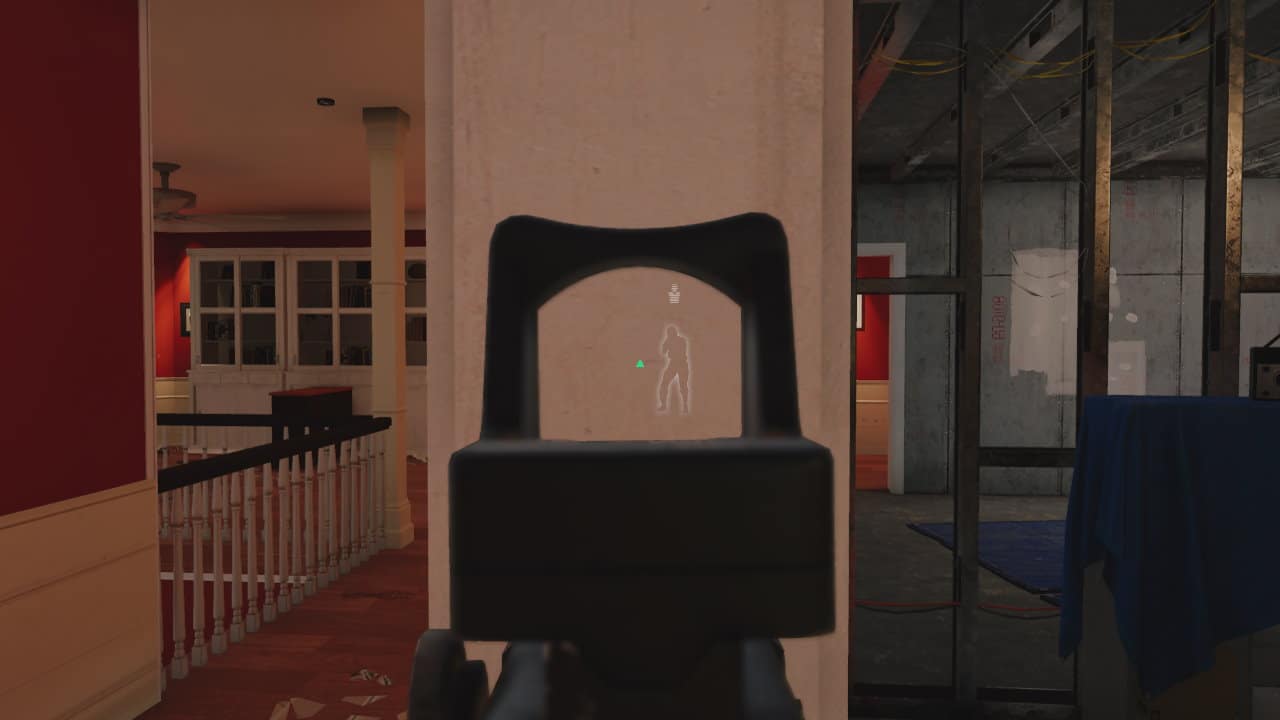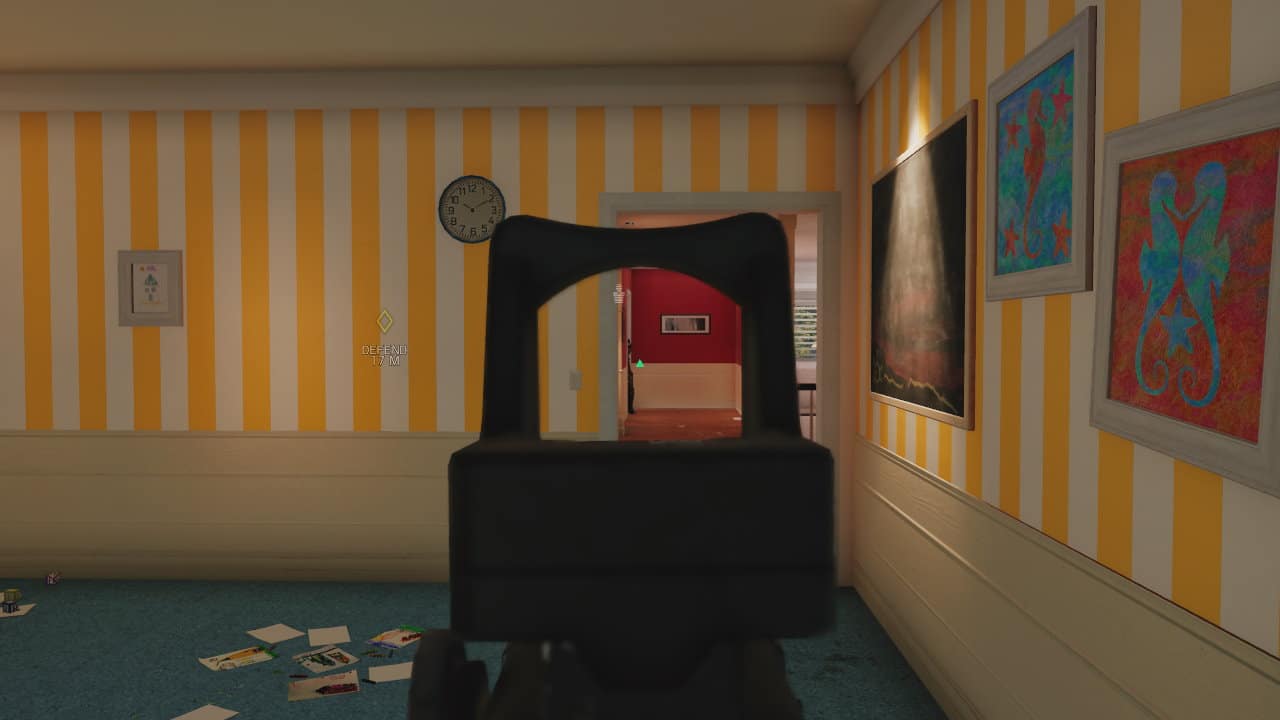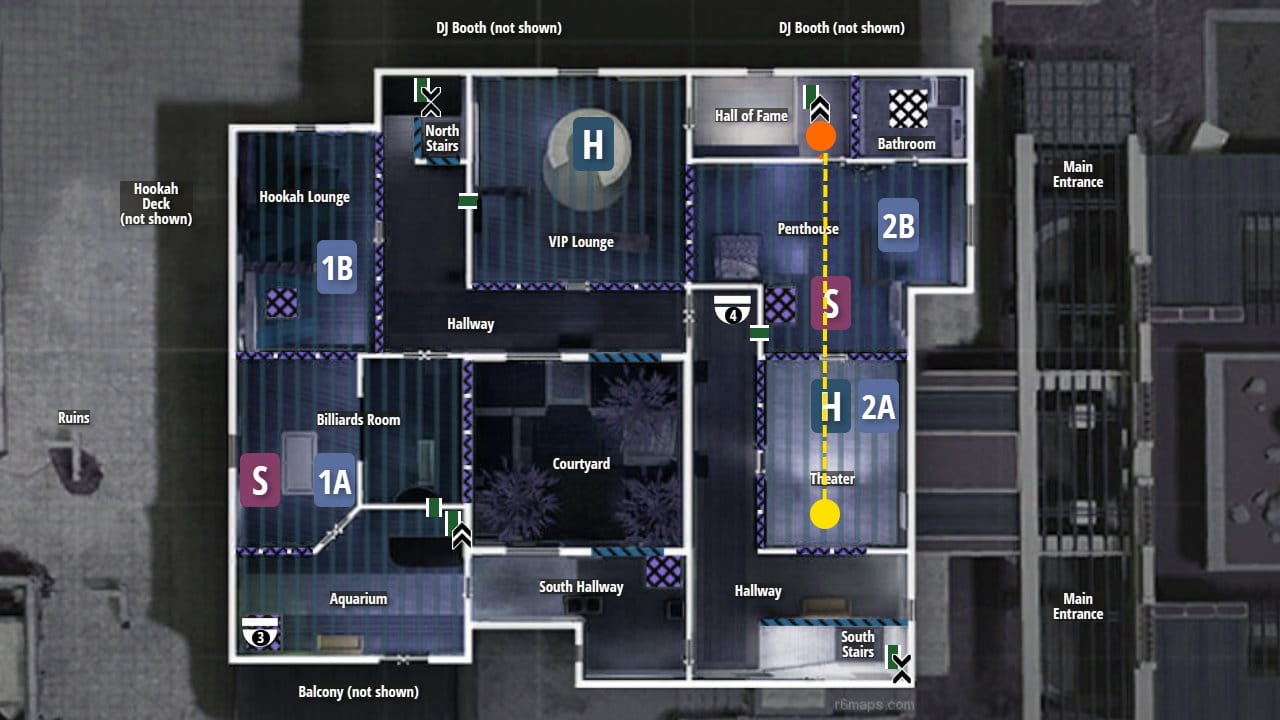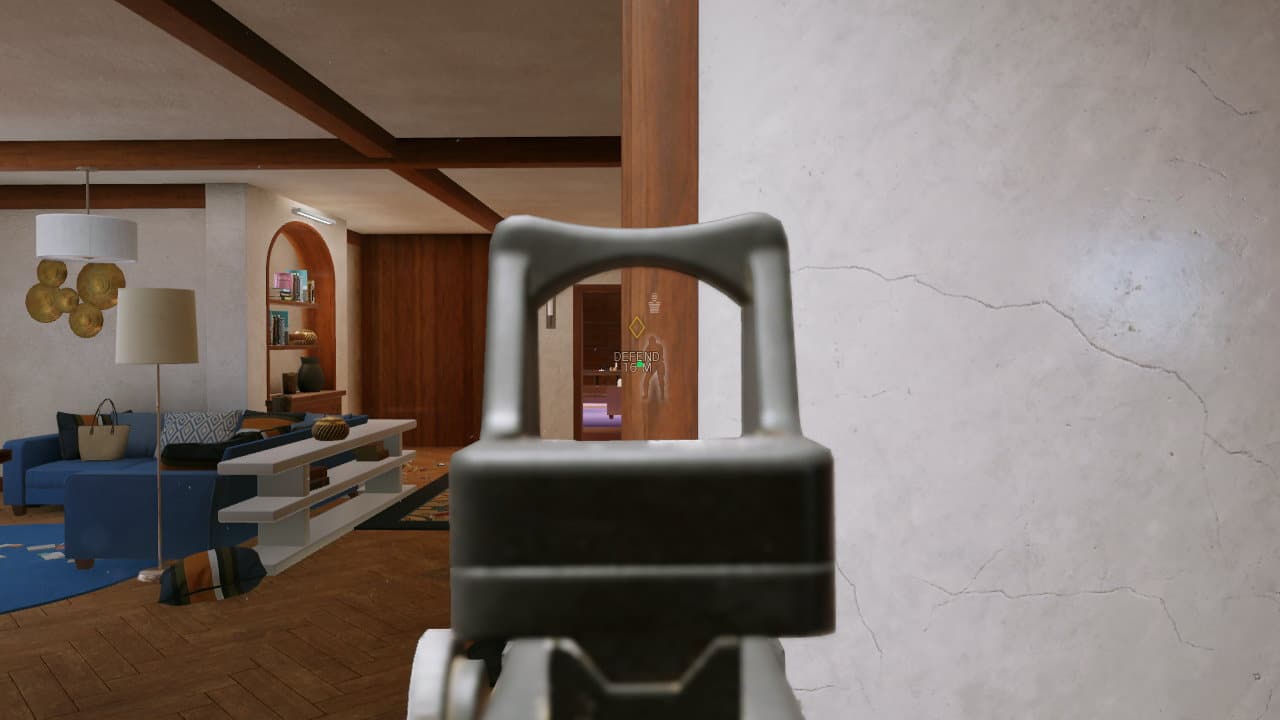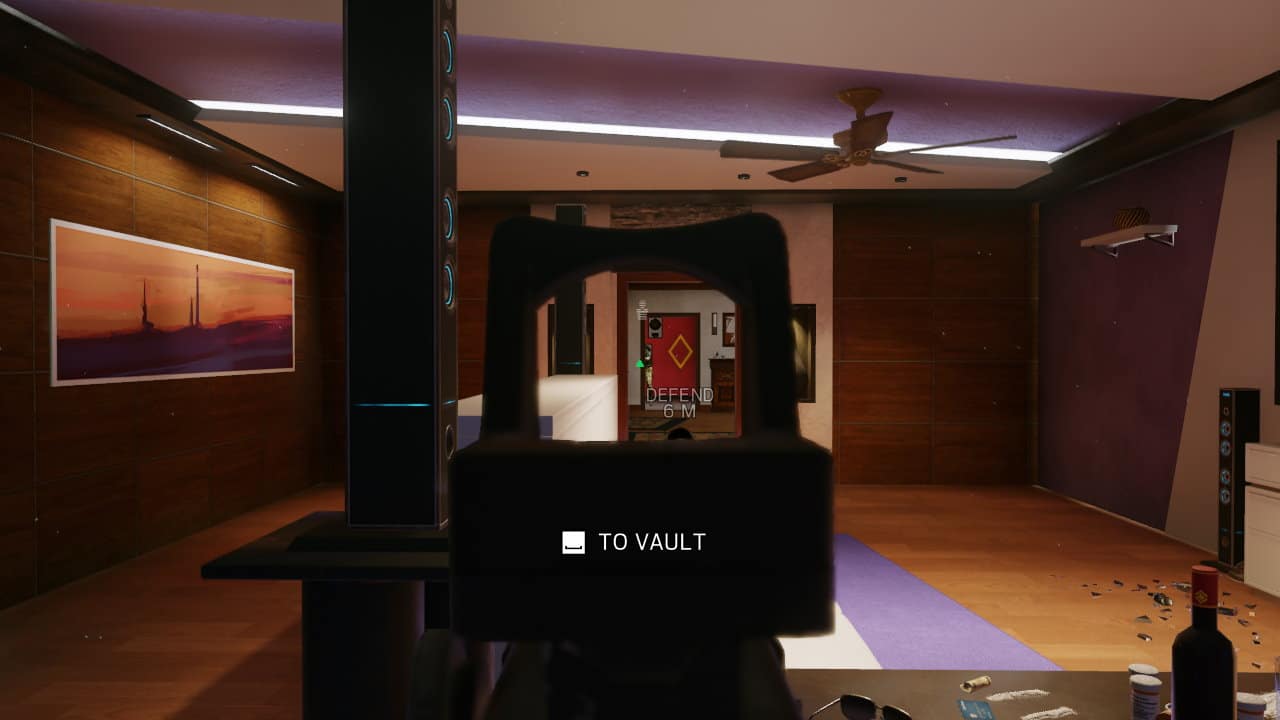When a Siege-playing friend or acquaintance of mine finds out that I also play Siege and have a slightly-above-average rank of Gold 1(ish) when playing regularly, half of the time I get asked for tips to improve. Advice about angles is one of the recurring tips I give, and I believe that it’s something that’s fairly intuitive to apply in-game once you understand the concept.
Introduction
The word “angle” can mean a few different things in Siege. For example, sometimes it refers to a specific angle i.e. standing at a specific place on a specific map looking in a specific direction. Those are useful to know, but I’m talking about the concept of angles in a much broader sense here – specifically about angles within the context of player perspectives.
At its core, this isn’t even really a Siege-specific concept. This is really just a general physics explanation with a little bit of video-game-context tacked on. It can be applied to any situation — in the real world or in a game — that uses the same concepts.
In the real world, people see out of their eyes.1 If something is in front of your eyes (say, a wall), then you can’t see in front of you beyond whatever that object is. However, other people may still be able to see you, because they can see the top or sides of your head, or perhaps your shoulder or a limb – places you can’t see out of. At the extreme end of this, you could cover your eyes with your hand and completely obscure your own vision entirely – and doing so wouldn’t prevent others from being able to see you.
FPS games work similarly, except that there’s a single “eye” – the player’s camera which they see out of while playing. Typically it’s located fairly close to the eyes of the character model, as you might intuitively expect. You can see this demonstrated quite easily in CS:GO as shown below, where the orange lines are where the player is looking, and the origin of each line roughly equates to that player’s camera position.
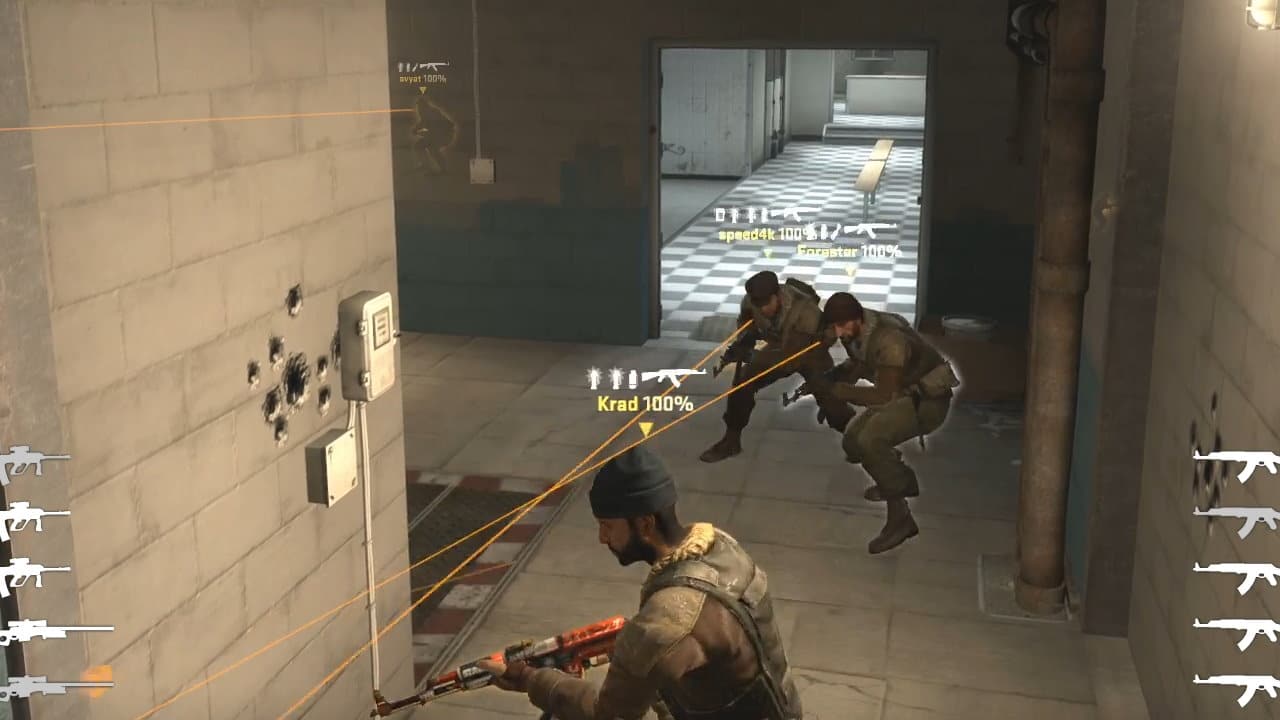
If you look at Krad (the player in the foreground), you can see how it would be very easy for an opponent to see the beanie and top of Krad’s head if he was hiding behind a crate (or other object) of just the right height, with Krad being unable to see that player back.
That’s just the vertical axis though – more frequently in games you’ll be worrying about the effect on the horizontal axis. This would be if Krad left his arm sticking out while hugging a wall – another player will see that arm before Krad’s player-camera is able to see anything back since his vision doesn’t originate from the location where his character model is being seen.
Short and long angles
If you’re currently holding a short angle, then the distance between you and the object obstructing your continued line-of-sight is low. An extreme version of this would be hiding behind a deployable shield in an otherwise open environment. Although you can move out of hiding and surprise someone from there, staying still would mean a slow-moving and careful opponent would easily see a significant amount of your character model before they’d appear on your screen at all.
Conversely, if you’re currently holding a long angle, then the distance between you and the object obstructing your continued line-of-sight is high. An extreme version of this would be standing outside on the north-west side of the map Plane and looking at the windows while moving south. Another player inside the plane at the windows and looking outside would always reveal part of themselves on your screen before you’d appear on theirs.
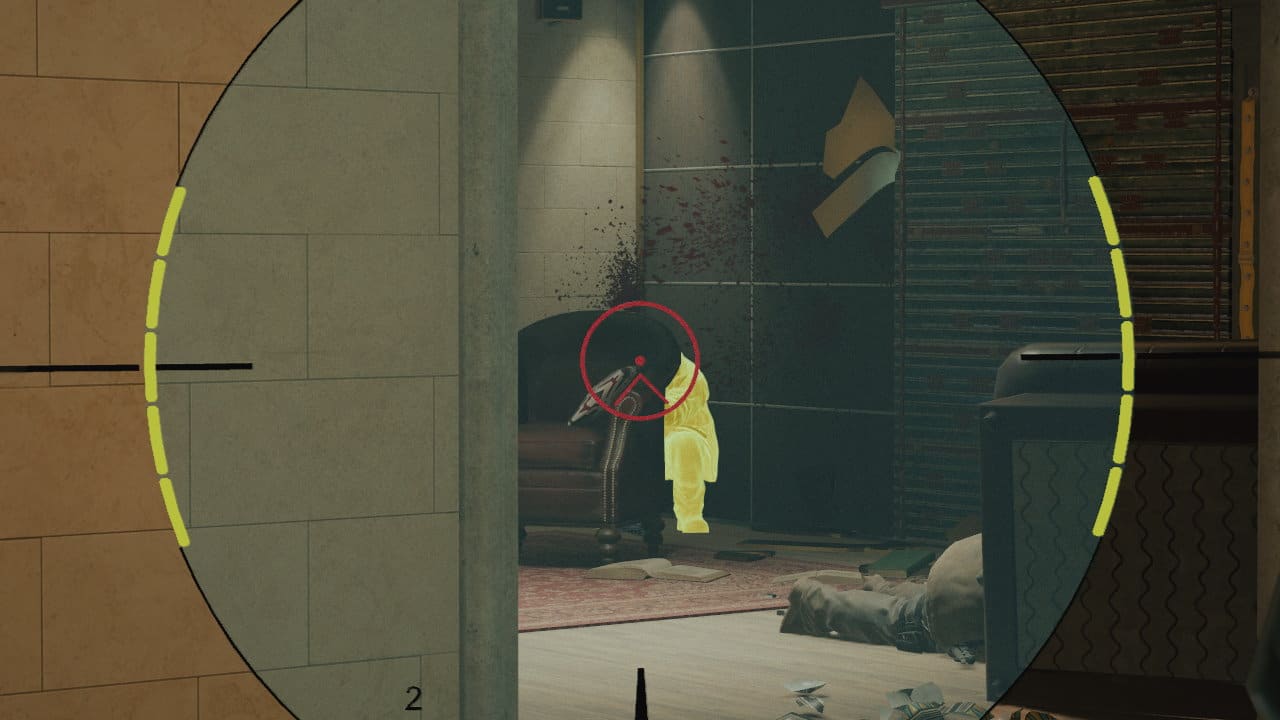
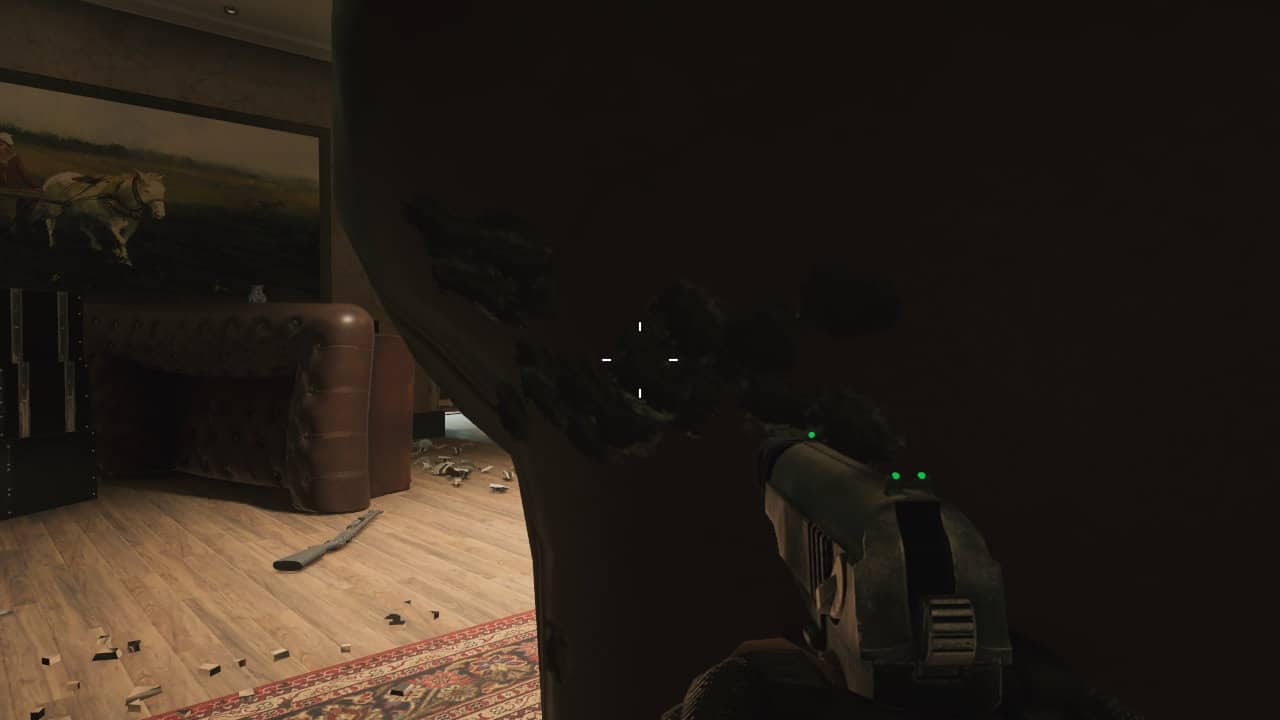
Generally speaking, you want your angle to be longer than your opponent’s so that you can see them slightly before they see you (and so you can then shoot them before they shoot you, hopefully).
Now, it’s important to remember that who sees who first is not exclusively dictated by angles – they’re just one of a few different factors that determine that. Players with low ping will generally see players around corners a moment earlier than those on higher ping. A peeking player will usually see a peeked player a moment before the peeked player sees them back.
Then there’s also the moment it takes your brain to process visual information and identify a player. A bright character model on a dark background is easy to spot, but a dark character model in a dimly lit environment against a dark background is much more challenging, and can genuinely cause enough of a brain-processing delay so as to eliminate any “see first” advantage you might otherwise get. A pale model against a pale background in strong outdoor lighting can present a similar issue.
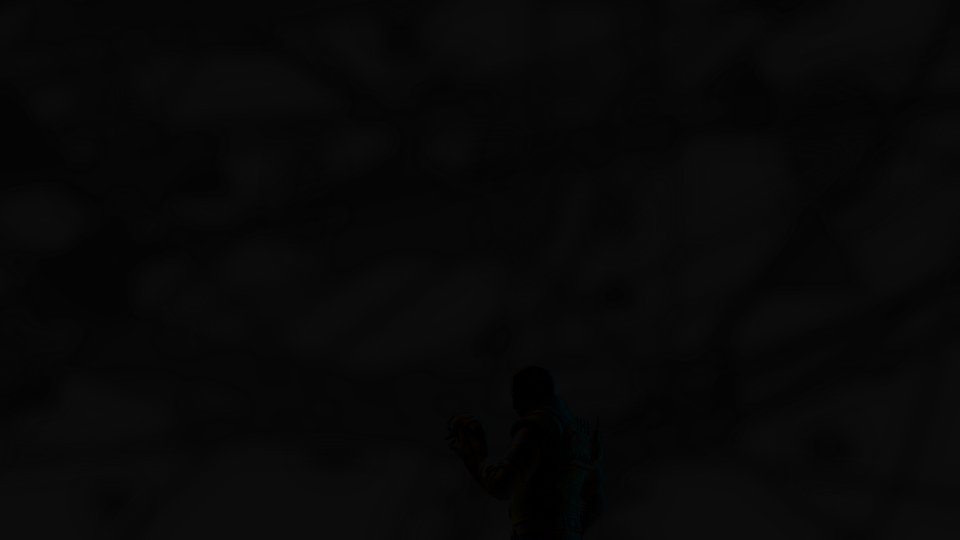
Still, it’s worth thinking about your angles while you play. If you have both a short angle and a long angle available in a given situation, then if they both accomplish the same goal you should probably pick the long angle. Doing so won’t guarantee that you’ll win a gunfight, but it does make it more likely that you will.
Good players don’t just magically succeed, they set themselves up for success.
It seems really simple when you say it out loud, but taking firefights where you’ve given yourself an advantage over your opponent makes it more likely that you’ll win the firefight. Most of the time you get to pick the terms of the firefight, so you can attempt to create one for yourself that’s more likely to work in your favor.
Siege example #1: House
In this example the two players involved are Green (top-left, in Workshop), and Pink (bottom-left, in Kid’s Bedroom). Let’s say that Green is the defender, and they’ve been defending Workshop. One of the other defenders calls out that Pink (an attacker) has entered Kid’s bedroom. Green aims down sights and shuffles sideways just into the corridor to take a look.
At this moment, Green is now making themselves hold a short angle against Pink, with Green’s line of sight obscured by a nearby object (the wall). This leaves Green extremely vulnerable to Pink, since Green cannot yet identify their target.
Pink is holding a long angle with their location far away from the object blocking their line of sight (in this case, the workshop wall), allowing them to see (and shoot!) Green even though Green can’t see them back.
This situation is of course highly favorable to Pink if all else is equal, and there’s even a decent chance that they can kill Green without taking any damage back.
Siege example #2: Coastline
Here we have Yellow (bottom-right) defending in Theater, with the attacking Orange (top-right) trying to peek from Hall of Fame.
In doing so, Orange has created a short angle for themselves with a wall once against blocking their line of sight to their opponent.2 This is also actually quite a common scenario if you play on Coastline and use Penthouse / Theater (depending on game mode) as the defending team.
From here, Yellow has an excellent long angle which they can use to take out Orange with ease. I think the image speaks for itself.
Leaning
For the sake of simplicity I haven’t used leaning in the screenshots of this article, but if you’re looking around a corner then you should virtually always be leaning in the opposite direction to where you’re moving your gaze. If you’re doing a visual sweep towards the right, you should be leaning to the left and vice versa.
Doing so slightly improves your angle on the horizontal axis, since it places your camera further towards the side of your model (see below). This means less of you is exposed before you’re able to see around that corner. The closer you are the more impactful this is – if you’re doing close-quarters sweeps indoors it can make a substantial difference.
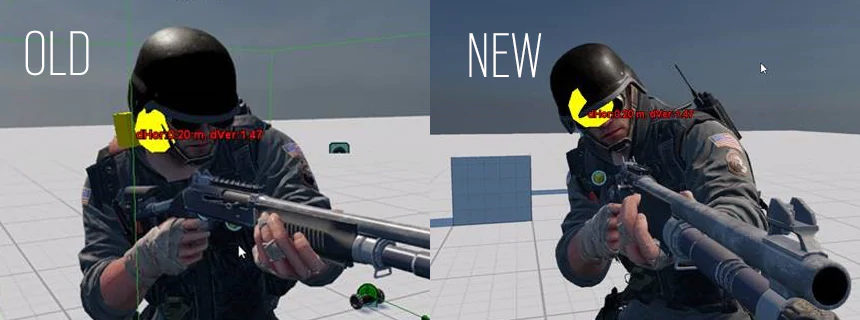
Closing words
Some of the time you’re forced to take short angles, but you usually have at least some control over the situation.
For example, you could use drones / cameras to scout out a room before entering it, so that you know what angle(s) your opponents attackers have – and more important whether any of them are in the room at all!
Maybe there’s an alternative way into a room which is less exposed for you. A well-placed Breach Charge or some hard-breach (e.g. from Thermite) might provide you with a better avenue of attack. As a defender you can use Impact Grenades on soft walls to much the same effect.
If you have smoke grenades, you can use one to block an enemy’s line of sight onto your position – just remember to throw it between your entryway and where your opponent is. Don’t throw it at the entryway itself unless you’re Glaz or feeling particularly spicy, since the person exiting a smoke cloud gets seen as they leave it before they can see anyone back.
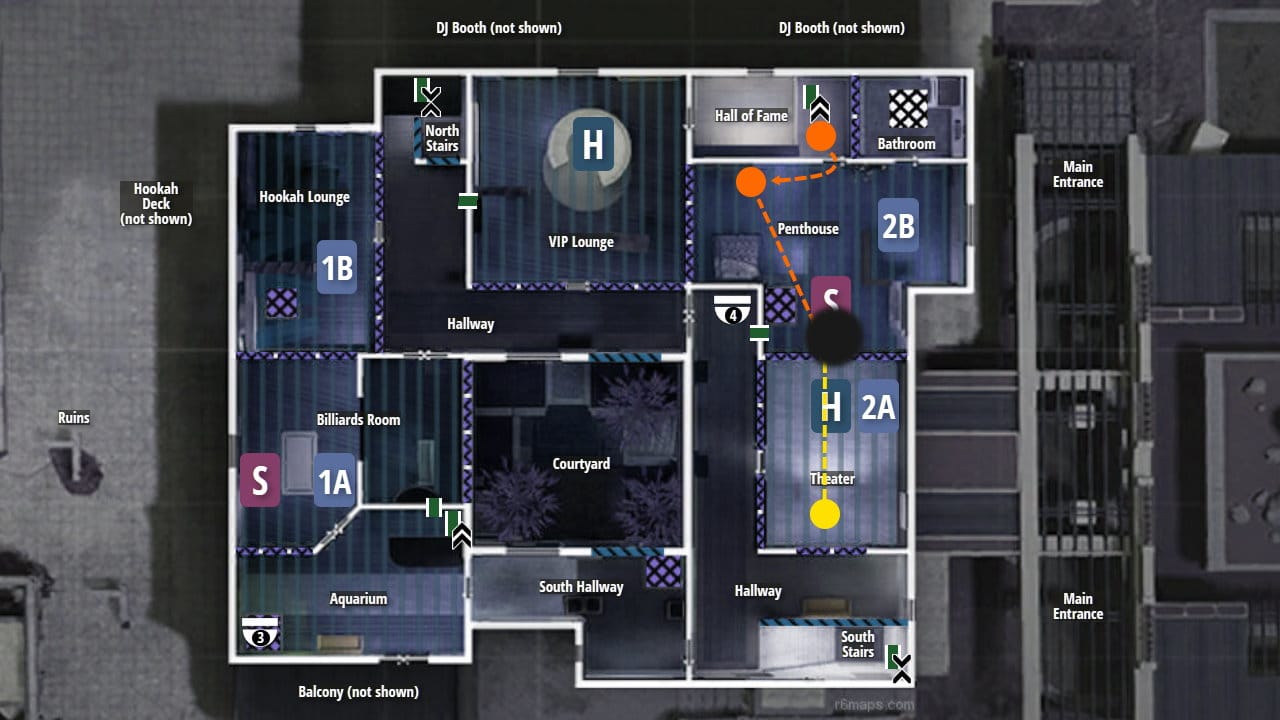
Prefiring can also be used to neutralise some of the advantage of a long angle, although doing so requires knowing (or correctly guessing) where your target is in order to be effective. Most of the time you’ll have plenty of spare ammo to do this with though, so as long as you don’t mind the noise you’re free to do it quite frequently if you want to.
Those are all things you can look into further if you’re interested in them – there are quite a few guides for most concepts in Siege if you’re willing to take the time to parse them. Until now I wasn’t that satisfied with those available on angles though, which is why I wrote this one. Now that’s finished I finally have something to link to people when I need to reference angles.
If you’re looking for a place to start, then I’m by no means a comprehensive index of other Siege content creators since I don’t regularly watch or read any one content source, but of those I’m familiar with I’d most recommend Get_Flanked to help you in your climb3 Rogue-9 for more specific technical information and comparisons,4 and /r/SiegeAcademy/ for a bit of a mix of everything. Just make sure to be a sponge for information without blindly accepting every recommendation thrown your way – not all of them are solid.
- [citation needed]
- As an aside they would also be extremely vulnerable to players in Penthouse, since the defending players could be anywhere in the room – but the attacker must be coming from that specific doorway based on the sound of their footsteps.
- Thumbnails and all.
- who amusingly released a video that covers angles (and more) after I already started work on this article – worth a watch if you want to dive a little deeper into angles: https://www.youtube.com/watch?v=vfoztlTIyGE
